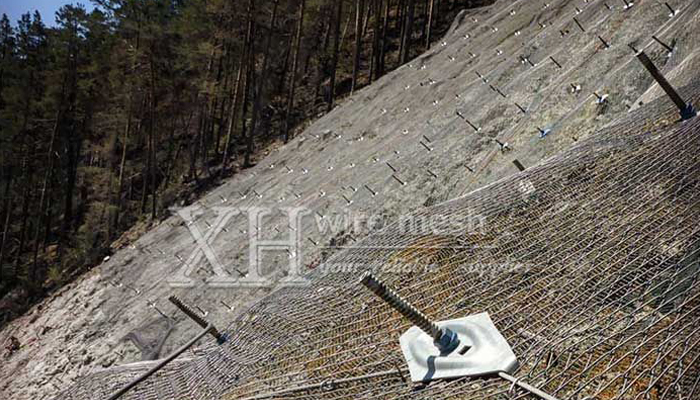How To Install A Slope Protection Netting?
Slopes and hills are structures that often cause stability problems such as erosion, landslides, and rockfalls, and, in the worst-case scenario, they can collapse. For these purposes, we can classify them as natural slopes and engineered slopes.
In the first case, these structures usually cause problems caused by ground damage, natural slope, soil type, diving areas, and local weather conditions. With man-made slopes, these do not usually cause any sliding problems, either in terms of design or in terms of the materials involved. This article discusses the use of a side slope protection net in the prevention of slope erosion. One of the most common problems is caused by erosion, which can be due to several different reasons.
High Tensile Rockfall Mesh
As a result of water, whether it is precipitation or groundwater. It is vital to always consider water as one of the main elements that can lead to erosion.
Depending on the slope, a slope may be more or less susceptible to erosion.
The soil has a lower absorption capacity than the amount of precipitation it can withstand.
Rutting and stream formation
Soil infiltration rate and porosity
Runoff curves
Seasonal fluctuations. Areas with large variations between dry and wet seasons are more affected by erosion.
Solar radiation intensity. High solar radiation can lead to further erosion.
Wind speed. Higher wind speeds will lead to further slope erosion.
Temperature variation. As described above. As temperature changes expand, we see stronger erosion effects.
With this in mind, a comprehensive analysis of geological, geotechnical, environmental, and hydrological conditions needs to be carried out before any construction work is carried out to predict the condition of the slope once built. For this reason, there are product fabrics such as reinforcement mesh that can ensure slope stability.
How To Install A Slope Protection Netting?
The following are the steps required to install the slope protection netting.
Preparation. Before installing the hillside and slope protection netting, make sure that any existing slopes and gullies are removed and the soil is prepared.
How to install. When installing slope protection netting you must start at the highest point of the slope and work your way down to the bottom.
In order to attach the mesh, a 20cm wide and 20cm deep trench must be dug at least 1m from the edge of the slope. Use ground spikes to insert the reinforcement mesh into the trench. Next, you must refill the trench while compacting it to increase its resistance.
When connecting the slope protection netting, make sure that the distance between each ground spike is no more than 1 meter on either side. Once the reinforcement mesh has been installed and fixed to the trench, it can be unfolded at the top of the slope in its downward direction.
Material overlap. Make sure you leave an overlap of 10 to 20 cm between the rolls. Similarly, you must also place ground spikes along the joints, no more than 1 m apart on either side. when joining the ends of two separate rolls, make sure you leave an overlap of at least 100 cm and provide further reinforcement by installing additional ground spikes on either side, no more than 50 cm apart.
Check. After installing the reinforcing mesh, you must assess the ground spikes installed between the ends of the two separate reels.
Vegetation cover. After checking that the spikes are correctly attached, you can continue to cover the slope or hill with substrate or hydroseeding to ensure its complete regeneration
For more information and prices on our slope protection netting, welcome to contact us today or request a quote.


评论
发表评论